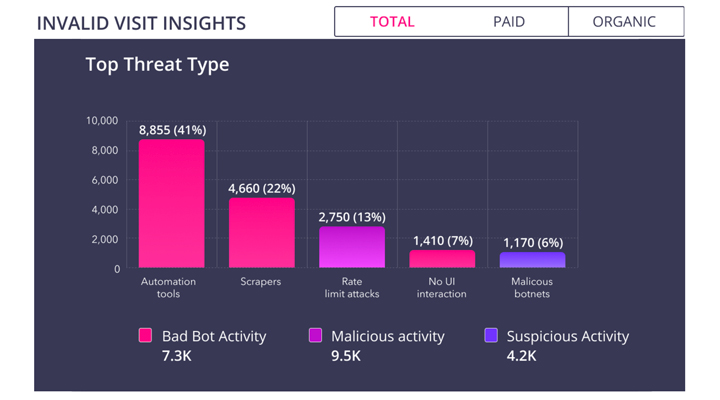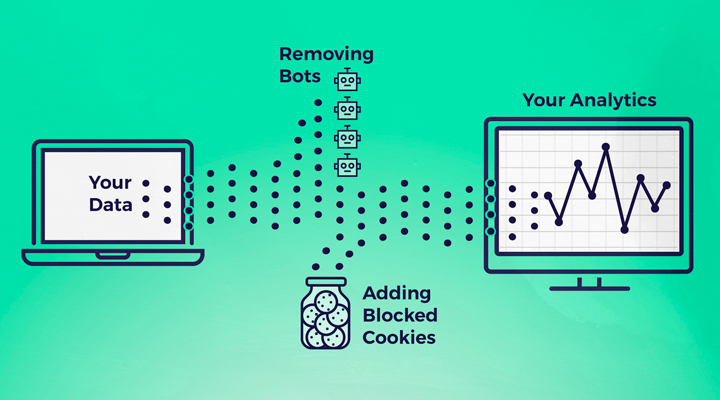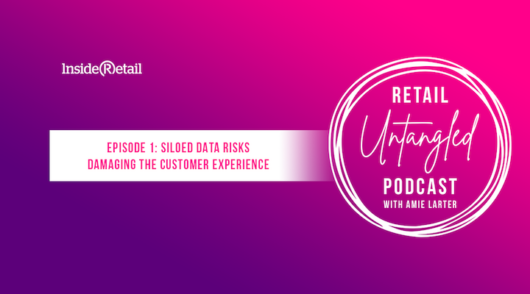Most digital marketers like to think of themselves as data-driven, particularly in a retail context. Rightly so – it’s virtually impossible to run digital ad campaigns without being comfortable with performance metrics, analytics and optimisation techniques.
However, there are serious issues with the quality of data that is being used to analyse campaign performance and fuel decision making.
The issue is two-fold: missing crucial data due to humans blocking ads, and inflated metrics due to bots clicking on ads and infiltrating digital conversion funnels.
Missing data
Most retailers see more than one in five conversions being impacted by blocked cookies.
The actual transactions are still happening, but these are often not either not tracked, or not attributed to any marketing campaigns, which undervalues paid media, affecting decisions around budget allocation and campaign optimisation.
According to audience research experts GWI, just over 33 per cent of Australian internet users use an ad-blocker (e.g. Ghostery or AdBlock), a privacy browser (such as Brave), or take steps to proactively clear cookies on a regular basis. This is mainly driven by a desire to block annoying ads rather than privacy concerns, and advertisers’ first-party cookies and tracking tags being caught as collateral damage.
On top of this, anyone using the Safari or Firefox browsers have another issue where their cookies have a lifespan of just 24 hours. Google’s changes to their Chrome browser and cookies have been put on hold until 2023.
Symptoms of missing data include:
- Discrepancies between what ad platforms are reporting in clicks and what is reported in Google Analytics.
- Consumers clicking on ads and buying products, with the ad platform reporting on the cost, but not all the conversions.
- Under-reporting repeat visitors and over-reporting new visitors.
- Showing ads to customers who have already just purchased (wasting money for the advertiser, and deeply annoying the customer).
- Skewed conversion optimisation testing outcomes.
Too much data

At the same time, virtually all advertisers are also over-reporting traffic and engagement metrics due to the infestation of bots, crawlers, scrapers and other forms of invalid traffic (IVT), which now makes up around 40 per cent of the world’s total internet traffic. Some of this IVT is benign, but much is malicious and wreaking havoc with digital advertisers, in a variety of ways.
It’s quick and easy to set up a botnet to make easy money from advertisers. If you follow the money, the reward for the bots is in retargeting and remarketing, which makes retailers particularly susceptible.
Bots get onto audience lists by acting like real users. They are programmed to search Google, follow links from social posts, or just directly visit the website as the URL is on a list. Clicking on an ad is also a good signal. Once on a site, the bots tend to browse some pages, add products to a basket or otherwise engage with some tools or forms, but not go as far as completing a transaction.
From the retailer’s side, these bots look like legit real prospective customers and are worth trying to bring back to the site to convert. But what’s really happening is the botnet operators are running fake websites with content (that they probably scraped from someone else using a web crawler) and serving up an array of cookies that advertisers are trying to reach. They then receive approximately half of the advertising dollars spent trying to reach them. Even where Google does end up crediting a bot’s click on a search ad, they are not blocking the bot from visiting the site or infiltrating an audience list, so it’s only a partial solution and applied only some of the time.
Symptoms of IVT include:
- Budget being wasted on bots that are never able to convert.
- Opportunity cost for the consumers that could have seen the ads and bought something.
- Skewed analytics – over reporting visits/page views/”soft” conversions.
- Skewed conversion testing – optimising page layouts to appeal more to bots than humans.
Take action

The following recommendations involve implementing tags directly on your website. Although they are separate tags, the process is very similar and you will see some time-saving benefits from implementing at the same time. Set up a time with a Ground Control Data specialist to work out if this combined approach is the best way to go.
- Start tracking your lost conversion data.
Sign up for a free trial of Rescue Metrics and start seeing a boost in your ad and analytic platforms almost immediately. It’s approximately 10 minutes to set up and you’ll get 21 days free.
- Start blocking invalid traffic
For larger advertisers (over $1 million per year), sign up for a 21-day trial of CHEQ with comprehensive blocking of invalid traffic across PPC platforms (including Google, Facebook, Twitter, LinkedIn, Outbrain and Bing) and options to block bots from interfering with other martech and analytics tags.
For smaller advertisers, sign up for a seven-day trial of ClickCease (CHEQ’s SMB offering) to start improving campaign ROI with Google Ads and Facebook Ads.
- Start thinking about holistic tracking approaches that don’t use cookies
There’s a new breed of media analytics platforms aimed at advertisers utilising a combination of digital and offline tactics to drive business outcomes that don’t rely on cookies for measuring success. With these platforms, advertisers can understand the synergies between channels (e.g., the impact of TV on your display campaign), the halo effects of campaigns in place for multiple different products or business units, the baseline of sales that happen without advertising, and the impact of competitor campaigns and external factors such as consumer confidence. Blackwood Seven is the world leader in AI-powered predictive media analytics – get a demo with their local Australian partners.






